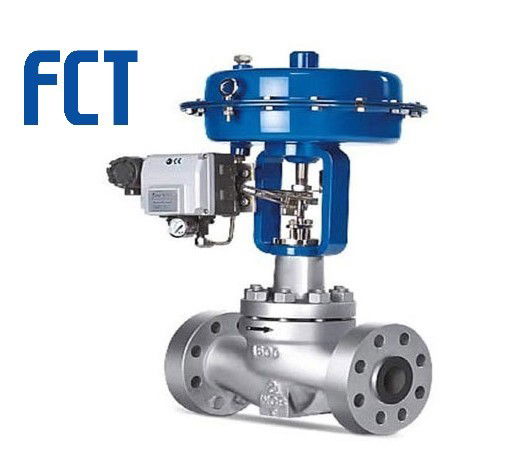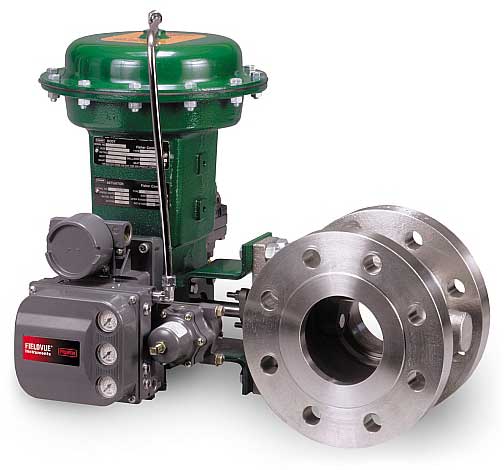Optimizing System Control with High-Performance Control Valves
Optimizing System Control with High-Performance Control Valves
Blog Article

Maximize Energy Savings and Comfort With Advanced Building Automation Controls
In the world of modern-day design and facility monitoring, the integration of innovative structure automation controls stands as a pivotal advancement. The merging of modern technology and sustainability has actually birthed a new period where power effectiveness, comfort optimization, and functional streamlining are no much longer possible truths yet distant aspirations. By utilizing the power of automation, structures can adapt, react, and advance in manner ins which were once unbelievable. The capacity for significant power cost savings and boosted comfort is not simply a possibility but a pledge waiting to be satisfied. This standard shift in building monitoring holds the crucial to unlocking a world where ecological conscientiousness and owner well-being sympathetically coexist within the wall surfaces of our frameworks.
Power Effectiveness Conveniences
Energy efficiency benefits can substantially decrease energy intake and functional prices in structures. By executing energy-efficient methods and modern technologies, building owners and operators can achieve considerable cost savings while likewise adding to ecological sustainability. Among the primary advantages of improving energy efficiency in structures is the decrease of energy bills. Energy-efficient systems, such as innovative structure automation controls, can optimize using sources like lights, air conditioning, and home heating, resulting in lower energy expenditures over time.
Moreover, enhanced power efficiency can lengthen the life expectancy of structure devices and systems. By operating much more successfully, HVAC systems, lighting fixture, and various other building parts experience less wear and tear, leading to reduced upkeep and replacement costs. Additionally, energy-efficient structures frequently command greater building worths and rental rates, supplying long-term economic benefits to owners.
Moreover, energy performance can improve owner comfort and performance. Correctly managed indoor atmospheres with optimal lights and thermal conditions produce an even more helpful and pleasurable work space, resulting in enhanced worker complete satisfaction and performance. Generally, the power efficiency benefits related to sophisticated structure automation controls are diverse, incorporating price savings, environmental stewardship, and passenger health.
Enhanced Convenience Control
Enhancing convenience control in building environments calls for a sophisticated assimilation of innovative automation systems for ideal resident well-being. By using sophisticated building automation controls, centers can tailor the indoor atmosphere to satisfy the specific demands and choices of residents. control valves.
By incorporating these sophisticated controls, structures can not just enhance convenience but likewise enhance energy performance by maximizing system operations based on actual tenancy and use patterns. Inevitably, focusing on resident comfort with innovative automation systems leads to a much more delightful and healthier indoor atmosphere.
Operational Performance Improvements

Additionally, the execution of real-time monitoring and analytics tools makes it possible for building drivers to recognize energy ineffectiveness and functional abnormalities immediately. By continually checking energy usage patterns and system efficiency metrics, modifications can be made in real-time to enhance power usage and make certain peak operational effectiveness. control valves. Furthermore, integrating demand action strategies right into structure automation controls can further boost functional efficiency by dynamically changing power usage based upon grid conditions and prices signals
Indoor Climate Optimization
Reliable interior environment optimization is a fundamental aspect of structure automation controls, guaranteeing occupants' comfort and well-being while making the most of power financial savings. By using sophisticated sensing units and controls, developing automation systems can continuously adjust and keep track of temperature level, humidity levels, Click Here air top quality, and ventilation to produce an optimum indoor environment. Keeping constant and comfortable conditions not just improves owner contentment however also improves efficiency and overall wellness.
Interior environment optimization also plays a vital duty in energy performance. By fine-tuning ventilation, home heating, and air conditioning systems based on real-time information and tenancy patterns, building automation controls can considerably lower energy intake - control valves. Implementing strategies such as demand-controlled ventilation and thermal zoning can help lessen energy waste while making sure that each area of the building obtains the necessary conditioning.

Sustainable Setting Creation
Structure automation controls not just maximize indoor environment conditions for energy efficiency and resident comfort but also lay the structure for producing a lasting atmosphere via calculated administration of resources and systems. By incorporating advanced building automation technologies, such as sensors, actuators, and smart software application, facilities can adjust and monitor power usage in real-time to lessen waste and reduce their carbon footprint. These systems enable predictive upkeep, determining possible issues before they rise and optimizing devices performance to enhance durability and effectiveness.
Furthermore, sustainable atmosphere development prolongs beyond energy management to encompass water conservation, waste reduction, and indoor air top quality improvement. Structure automation controls can regulate water use, spot leakages, and guarantee correct waste disposal techniques, adding to total sustainability efforts. Furthermore, by keeping track of and regulating ventilation and purification systems, these technologies improve occupant Get More Info health and wellness and efficiency while decreasing power intake connected with cooling and heating operations.
Final Thought
To conclude, advanced building automation manages deal substantial benefits in terms of power savings, comfort control, operational effectiveness, interior environment optimization, and developing a sustainable setting. By implementing these controls, buildings can achieve ideal efficiency while lowering energy usage and enhancing owner convenience. It appears that making use of sophisticated automation innovation is important in improving structure efficiency and developing a more lasting future.
Energy performance advantages can considerably lower Read Full Report energy consumption and operational expenses in structures. In general, the energy efficiency advantages linked with advanced building automation controls are multifaceted, encompassing cost financial savings, ecological stewardship, and occupant well-being.
In addition, integrating demand response approaches right into structure automation controls can even more enhance functional effectiveness by dynamically adjusting power use based on grid conditions and rates signals.
Structure automation controls not just enhance indoor environment conditions for energy effectiveness and resident convenience however also lay the structure for creating a lasting atmosphere through calculated administration of resources and systems.In final thought, progressed building automation regulates deal significant advantages in terms of energy cost savings, convenience control, operational performance, indoor environment optimization, and producing a lasting environment.
Report this page